#toor dal recipe
Text
Dali Toye | GSB style Soupy Lentil Curry
Dali Toye
Dal (lentils) serves as a culinary cornerstone throughout the vast expanse of India, with varying preparations unique to each community and region. The Dali Toye, hailing from the coastal regions of Karnataka, holds a special place among the Goud Saraswat Brahmin (GSB) community. This delectable dish, a Lentil Soup made from Split Pigeon Peas (Toor Dal), boasts simplicity in its…
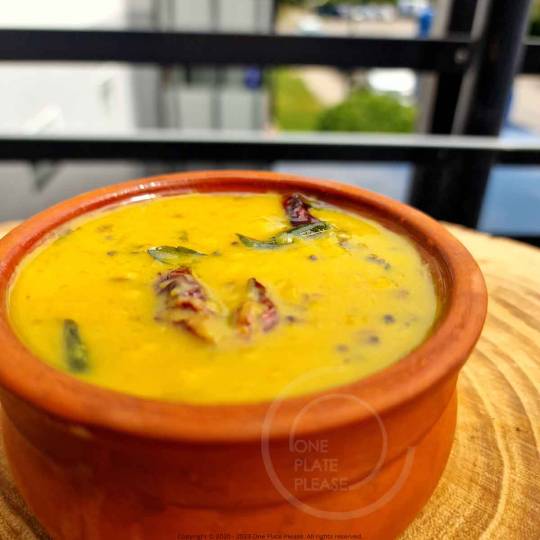
View On WordPress
#dali toye#dali toye recipe#dalitoye#gsb cuisine#healthy recipes#Indian cuisine#lentil soup#Mangalorean recipes#South indian cuisine#toor dal recipe#Udupi cuisine
0 notes
Text
Raw Mango Dal Fry (North Indian Style)
Raw Mango Dal Fry (North Indian Style)
Raw Mango Dal Fry is a delicious and tangy Indian lentil curry made with raw mangoes and spices. It’s a popular dish, especially during the summer season. When raw mangoes are abundant. The tartness of the raw mangoes adds a unique flavour to the dal, making it both refreshing and satisfying.
For more recipes from this blog you might like please…

View On WordPress
#Dal recipe#Dal recipe with green mango#Easy Recipes#Indian mango dal#Indian mango recipes#Kairi dal fry (Kairi is the Hindi term for raw mango)#Kairi dal fry (using the Hindi term for raw mango)#Mango dal fry#Mango dal recipe#Mango lentil curry#Mango lentil stew#Raw mango dal#Raw mango dal fry#Regional Indian Cuisine#Spicy mango dal curry#Spicy mango lentil stew#spicy veg recipes#Summer dal dishes#Summer dal recipe#Tangy dal recipe#Tangy mango lentil curry#Toor dal with mango#Toor dal with raw mango
0 notes
Text
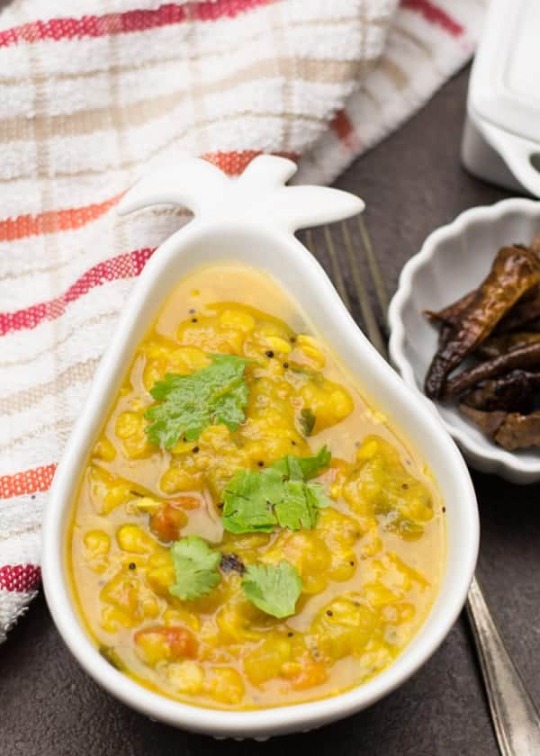
Dosakaya Indian lentil dal is made with yellow cucumbers, toor dal, onion, tomatoes, and turmeric powder. This dosa kaya pappu is one of the most popular and classic recipes in South India. Everyday comfort food made in Andhra style.
1 note
·
View note
Text
"Delicious Dal Tadka Recipes: Explore the Best Ways to Make this Flavorful Indian Dish."
Dal Tadka is a popular Indian dish known for its rich flavors and comforting taste. It is a staple in Indian cuisine and is enjoyed by people of all ages. The dish consists of cooked lentils tempered with aromatic spices and garnished with a flavorful tadka (tempering) of ghee, cumin seeds, garlic, and dried red chilies. The dal is typically served with rice or Indian bread such as roti or naan. Read more
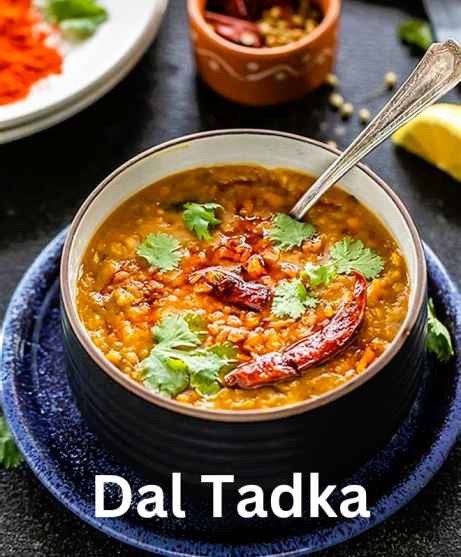
#dal tadka#daal tadka#dal fry tadka#arhar dal tadka#dal tadka recipe#punjabi dal tadka#easy dal tadka recipe#how to make dal tadka#dhaba style dal tadka#dal tadka dhaba style#dal tadka recipe video#dal tadka recipe in hindi#restaurant style dal tadka#authentic dal tadka recipe#dal tadka restaurant style#dal fry#restaurant style dal tadka recipe#dal recipe#toor dal fry kaise banae#dal fry recipe video#dal fry recipe#easy dal recipe
0 notes
Text
Give Tur Dal A South Indian Twist With This Amazing Recipe
Give Tur Dal A South Indian Twist With This Amazing Recipe
It’s true that our kitchen is at all times stashed with totally different sorts of dal so we do not actually thoughts having it nearly every single day. But let’s admit that typically monotony creeps in and our palate resists the identical previous flavours of a typical dal even whether it is made with a special selection. Here we’ve the proper recipe for tur dal that gives you an entire new…
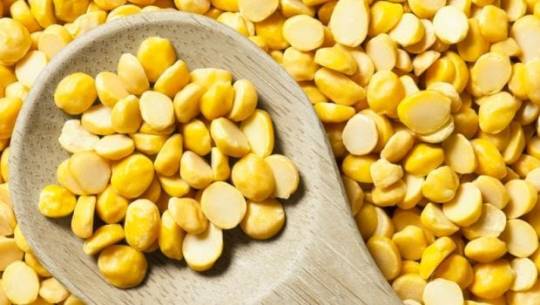
View On WordPress
0 notes
Video
youtube
Dal Recipe in Tamil | Protein Rich Side dish for Rice | Toor Dal Gravy
0 notes
Text

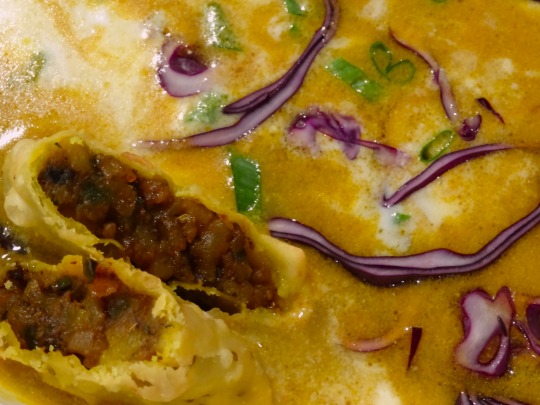
[ID: First image is a large, shallow dish filled with a bright yellowish orange soup filled with red cabbage and green onion and drizzled with coconut milk. A halved samosa sits in the soup and a plate of samosa is visible in the background. The second image is a close-up on the samosa resting in the soup, showing its deep brown filling. End ID.]
Samusa thouk (Burmese soup with split chickpeas, tamarind, and samosa)
Samusa thouk is a bright, savory, slightly spicy soup often eaten with leftover samusa. The samusa are broken and placed in a bowl, and the soup is then spooned over them.
My recipe makes Burnese samusa that are flavored with turmeric and black mustard seed and made richly sweet with the addition of jaggery—they play beautifully against the tartness of the tamarind in the soup. You may also use Indian samosa from frozen or from take-out.
Recipe under the cut!
Patreon | Tip jar
Ingredients:
8 Burmese samusa
1 Indian bay leaf (tej patta)*
2-3 dried Indian red chilis, broken in half
2 tsp cumin seeds (jeera)
1 tsp brown mustard seeds (rai)
1/3 cup neutral oil
1 red onion, diced
8 cloves garlic, minced (3 Tbsp)
1-inch chunk ginger, minced
1 tsp ground turmeric
1 tsp sweet paprika (optional)
1 tsp coriander seeds, toasted and ground
1/2 tsp black peppercorns, toasted and ground
1/2 cup water
1/4 cup besan (chickpea flour)
1/2 cup water
8 cups (2 liters) vegetable stock
1 Tbsp tamarind paste
1/2 cup chana dal (split chickpeas), soaked in cool water for an hour**
1/4 to 1/2 cup coconut milk (optional)
Salt to taste (about 1 1/2 tsp)
Shredded red cabbage, mint, green onion, cilantro, and lemon or lime to serve
*Indian bay leaves are distinct from Turkish or California laurel bay leaves and have a different taste and fragrance. They will be labelled "tej patta" in an Asian or halaal grocery store, and have three vertical lines running along them from root to tip, rather than radiating out diagonally from a central vein. Omit if you don’t have any.
**You may substitute toor dal (split pigeon peas) for chana dal, or use moong dal (yellow lentils) in a pinch. These grams would not need to be soaked. If you have not soaked the chana dal, the cooking time will increase by about 20 minutes.
Instructions:
1. Heat 1/3 cup of a neutral oil, such as vegetable or canola, in a large pot on medium.
2. Add bay leaf and dried chilis and fry for about 30 seconds, until fragrant. Add cumin and mustard seeds and fry until they are fragrant and popping into the air.
3. Add onion and fry, stirring occasionally, until golden brown (15-20 minutes).
4. Meanwhile, heat a dry skillet over medium-low heat. Add chickpea flour and toast, stirring often, for a few minutes until fragrant and several shades darker. In a mixing bowl, whisk chickpea flour with 1/2 cup water until smooth.
5. Add ginger and garlic to the pot with the onion and fry, stirring occasionally, about 30 seconds until no longer raw-smelling. Add ground spices (turmeric, paprika, coriander, and black pepper) and fry for about 30 seconds until fragrant.
6. Add lentils to the pot and toast for 2 minutes.
7. Add tamarind paste, vegetable stock, and chickpea flour mixture and stir to combine. Raise heat to bring to a boil, then lower heat to a simmer.
8. Cook for 20-30 minutes, until the dal is tender and cooked through. Add coconut milk, if desired, and salt. Taste and adjust spices.
9. Serve warm over broken samusa. Top with shredded red cabbage and fresh herbs.
#cooking#Burmese#vegan cooking#vegan recipes#red cabbage#yellow lentils#chickpea flour#tamarind#chana dal
145 notes
·
View notes
Text
MASALA DOSA
Introduction:
Masala Dosa also called Masale dosey, is a South Indian dish. It was a type of dosa it was originated in the town of Udupi in Karnataka. It is made from rice, lentils, Urad dal, chana dal, fenugreek, puffed rice, Toor dal, dry red chili, and served with potato curry, and sambar.
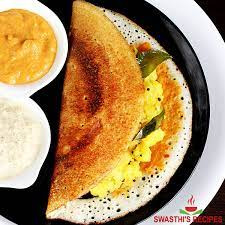
HOW TO MAKE A CRISPY MASALA DOSA:
Masala dosa is a South Indian dish. It was an easy and popular, tasty South Indian stable breakfast recipe made with rice and urad dal. Basically an extension of the traditional dosa recipe, where dosa is made crip and stuffed with potato masala. It is perhaps one of the famous dishes from south India, which can be served for morning breakfast or also as an evening snack with coconut chutney and sambar.
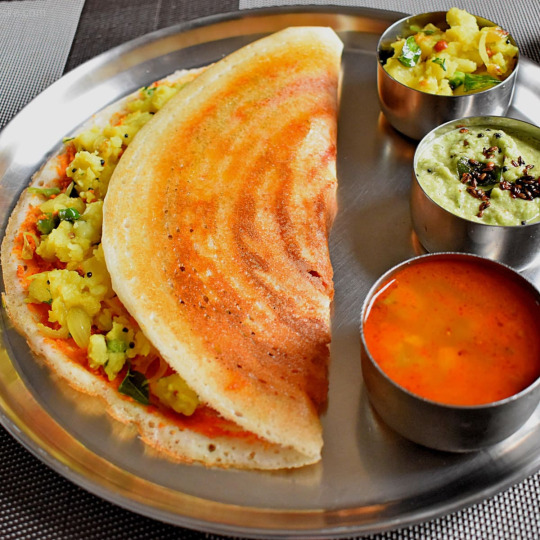
THE STORY OF MASALA DOSA:
Then are many stories around India, but according to the wiki, it originated from my hometown Udupi. It was here in Udupi, that the dosa’s were made crisp and served. One of the local restaurants in Udupi started to serve potato masala stuffed dosa as a variation and also to lower the coconut chutney consumption. In those days, coconut-based dishes were considered pricey and dosas cannot be consumed without any side dish. Gradually stuffed dosa became one of the norms and the migrant community took this variety to Mumbai and exposed it to a broader audience. It was very well received in the cosmopolitan city and that’s how it became one of the popular dose varieties.
THE SPECIAL OF MASALA DOSA:
Masala dosa are crispy, soft, savory, and healthy crepes made with rice and lentil batter. The dosa is gluten-free and dairy-free, with a sturdy yet soft texture that’s great for holding a hearty homemade potato filling. To make the batter, lentils and rice are soaked for several hours and then blended together.
WHY PEOPLE LIKE MASALA DOSA:
Most people love masala dosa or its rich taste. Mixing each bite with spicy sambar soup and coconut chutney will give your day the kick-start it needs. The sambar and even the masala dosa have some of the major pure Indian spices, which will give it that wow factor you have been looking for in breakfast food. Masala Dosa is one that is crisp, aromatic, flavourful, and has a potato masala or spiced seasoned potatoes stuffed in it. These crispy crepes are quite addictive and delicious.
Masala dosa is a popular South Indian dish that originated in the state of Karnataka. The exact history of masala dosa is not clear, but it is believed to have originated in the town of Udupi. The dish was an instant hit and soon became a staple in South Indian cuisine.
Plain dosa
Masala dosa: adding masala curry as stuffing
Upma dosa: adding upma as stuffing
Onion dosa: adding sliced onions as stuffings
Panner dosa: adding chopped panner curry as stuffing
Corn dosa; adding sweet corn as stuffing
Butter dosa
Egg dosa.
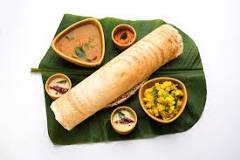
The original Mysore masala dosa, also known as Mylari dosa in Mysore, has very humble origins. The Vinayaka Mylari Hotel, the original creators of this amazing Mysore masala dosa still tantalizes the taste buds of all those in search of it.
this amazing Mysore masala dosa still tantalizes the taste buds of all those in search of it.
A traditional southern Indian dish known as masala dosa is popular throughout the country, made from a batter of soaked rice and lentils that is baked into a thin pancake and usually stuffed with potatoes, onions, and mustard seeds. The dish is often garnished with grated coconut and chopped coriander.
With its huge popularity, there are also some variations of the dish, such as Mysore masala dosa, rava masala dosa, onion masala dosa, and paper masala dosa. It is usually consumed as a quick snack or as a part of any meal of the day.
Masala dosa has even made the list of 10 foods to try before you die, compiled by the Huffington Post, alongside famous dishes such as Beijing duck, moussaka, and BBQ ribs.
Which country is famous for masala?
India is the world’s largest producer of spices. The availablity of abundant natural resources and favourable climate makes it favourable for the growth of spices in India.
CONCLUTION:
Masala dosa is very popular in South India. It is all the people liked it. Then masala dosa is a very tasty and healthy food. So once come to South India then eat and taste masala dosa.
4 notes
·
View notes
Text
Delicious Sambar Masala Recipe with Suhana Sambar Masala
Do you know about the origins of Sambar? This lentil-based stew prepared with vegetables, tamarind, and spices was introduced in Tamil Nadu during the Marathi reign in Tanjore and can be found throughout South India. Having a tangy and savoury taste, sambar goes well with rice, dosa, idli, upma, vada, etc. It’s rich in protein, and you can have it for breakfast, lunch, and dinner, making you feel satiated. You can make an authentic sambar with the right spices at home. If you can’t, here’s an easy way to make sambar – through Suhana Masala. Here’s how you can make traditional South Indian sambar at home easily!
How do you make a sambar using the traditional South Indian method?
List of the ingredients needed for making authentic sambar
Here’s what you need to make sambar:
Toor dal – 1 cup
Vegetables of your choice – shallots, drumstick, potato, capsicum, broad beans, ladies finger, cut into broad pieces (you can add any one of these with shallots to make sambar)
Tamarind pulp – 1 cup (soak a lemon-sized tamarind in hot water and extract the pulp)
Suhana sambar masala – 2 tablespoons
Oil, mustard seeds, hing, dry red chillies, and curry leaves for tempering.
Water and salt as required
Jaggery – 1 tablespoon (optional)
Coriander leaves (optional)
Step-by-step sambar recipe with Suhana sambar masala
Add toor dal and vegetables of your choice to a pressure cooker and cook for four to five whistles.
Meanwhile, peel the shallots. In a kadhai, add oil and fry the shallots. Once cooked, add the tamarind pulp and let it cook for some time until the shallots become soft. Ensure to cook this on simmer mode. If you do this on high flame, the tamarind pulp may become thick in no time, and it might affect the taste of your sambar.
Once your toor dal and vegetables are cooked, add the mashed lentils and vegetables to the tamarind pulp and shallots mix, with Suhana sambar powder and jaggery, with salt and let it boil for 10 minutes.
You can also cook the vegetables directly in the tamarind pulp, but this may take a while. So, if you are on a time crunch, just use a pressure cooker!
Add water if your sambar is thick. If not, add oil and mustard seeds in a small frying pan. After they splutter, add hing, curry leaves and dry red chilly. Add this to your sambar and turn the stove off.
Authentic South Indian sambar is ready with a Suhana mix in no time!
Serving Suggestions
Serve it hot with rice, idli, or dosa. If eaten with rice, adding ghee or sesame oil may enhance the sambar taste! You can garnish with coriander leaves before serving. However, it’s entirely your choice, as the taste does not alter with coriander, but this will give off a wafting aroma!
Health benefits of spices and herbs used in Suhana sambar masala
Suhana sambar masala has no added preservatives or MSG, making it completely safe to consume. Turmeric in the masala acts against inflammation in the body and reduces infections and allergic reactions. Cumin and fenugreek aid in digestion, regulate blood sugar levels and promote healthy blood circulation. You can add sambar to your daily diet, and it’s highly nutritional. Protein-packed lentils and vegetables like shallots will help your body cool down during summer!
Here’s to making delicious sambar at home with Suhana! You can get this from our website.
FAQs
Can I use other types of lentils instead of toor dal?
You can also add moong dal to sambar, but this may alter the taste of sambar a bit. Or you can use both, depending on your choice!
Is it necessary to use tamarind pulp, or can I substitute it with something else?
Tamarind pulp is necessary to make sambar. If you don’t use tamarind, add local tomatoes instead of apple tomatoes for a tangy flavour.
What vegetables can I add to the sambar?
To your sambar, add potato, drumstick, raw mango, broad beans, carrot, capsicum, radish, pumpkin (white and red), and shallots.
0 notes
Text
From Creamy to Spicy: Exploring the Diverse World of Dal Varieties
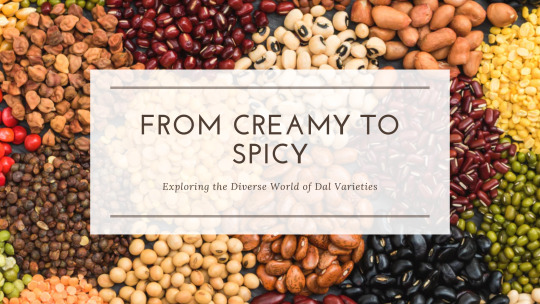
Dal, a term encompassing various dried pulses, holds a revered place in Indian cuisine. Whether simmered to creamy perfection or infused with aromatic spices, dal dishes offer a comforting and nutritious meal for millions around the globe. Let's delve into the colorful tapestry of dal varieties, from humble origins to tantalizing recipes.
Introduction
Dal, derived from the Sanskrit word "dal" meaning split, refers to dried pulses like lentils, peas, and beans. It serves as a cornerstone of Indian cooking, providing a substantial source of protein for vegetarians and meat-eaters alike. The adaptability of dal in various recipes underscores its culinary significance.
The Origins of Dal
Historically, dal has been a dietary staple in the Indian subcontinent for millennia. Its consumption dates back to ancient civilizations, evolving alongside culinary practices and agricultural advancements. Over time, dal has integrated into diverse regional cuisines, becoming an indispensable ingredient in countless dishes.
Nutritional Benefits
Dal stands out for its nutritional profile, boasting high levels of protein, fiber, vitamins, and minerals. Its low glycemic index makes it an ideal choice for regulating blood sugar levels and promoting satiety. Incorporating dal into one's diet can contribute to overall health and well-being.
Common Types of Dal
Masoor Dal
Masoor dal, known for its quick-cooking nature, boasts a reddish-orange hue and a nutty flavor. It lends itself well to soups, stews, and savory lentil cakes.
Moong Dal
Moong dal, revered for its delicate texture and mild flavor, is a favorite in Indian households. Whether in dals, khichdis, or desserts like moong dal halwa, it adds a delightful creaminess to dishes.
Toor Dal
Toor dal, also known as arhar dal or pigeon peas, features prominently in South Indian and Gujarati cuisine. Its robust flavor and ability to thicken gravies make it indispensable in dishes like sambar and dal tadka.
Chana Dal
Chana dal, derived from split chickpeas, offers a hearty texture and a slightly sweet taste. It finds its way into savory snacks, dal preparations, and delectable desserts like besan ladoo.
Urad Dal
Urad dal, characterized by its black skin and creamy white interior, is a staple in Punjabi cuisine. Whether in dal makhani, vadas, or idlis, it imparts a rich and velvety consistency to dishes.
Regional Variations
Across India, dal preparations vary widely, reflecting regional tastes, ingredients, and cooking techniques. From the spicy dal fry of North India to the tangy sambar of South India, each region showcases its unique spin on dal dishes.
Cooking Techniques
Traditional methods of cooking dal involve slow simmering with aromatic spices like cumin, coriander, and turmeric. However, modern culinary practices have introduced innovations like pressure cooking and slow-cooker recipes, making dal preparation more convenient than ever.
Dal in Global Cuisine
Beyond Indian borders, dal has found its way into international kitchens, inspiring fusion dishes that marry Indian flavors with global ingredients. From dal tacos to dal risotto, chefs worldwide continue to experiment with this versatile ingredient.
Dal Recipes
Dal Tadka
A quintessential Indian comfort food, dal tadka features tempered spices like mustard seeds, cumin, and dried red chilies, adding a burst of flavor to the creamy dal base.
Dal Makhani
Indulge in the creamy goodness of dal makhani, simmered with butter, cream, and a melange of spices, resulting in a rich and velvety texture that's hard to resist.
Sambar
A South Indian classic, sambar combines toor dal with an array of vegetables and tangy tamarind, creating a hearty and satisfying dish served with rice or idlis.
Dal Fry
Dal fry, a popular North Indian dish, features lentils cooked to perfection and tempered with onions, tomatoes, garlic, and a blend of aromatic spices.
Dhansak
Hailing from Parsi cuisine, dhansak combines lentils with meat, vegetables, and spices, resulting in a savory and aromatic stew enjoyed with rice or bread.
Conclusion
In conclusion, the diverse world of dal varieties offers a culinary journey rich in flavor, nutrition, and cultural significance. From creamy to spicy, each dal brings its unique charm to the table, celebrating the tapestry of Indian cuisine and its global influence.
Unique FAQs
Can dal be a complete protein source on its own?
While dal is rich in protein, it's advisable to combine it with grains like rice or wheat for a complete amino acid profile.
Are there any gluten-free dal options?
Yes, most dals are naturally gluten-free, making them suitable for individuals with gluten sensitivities or celiac disease.
How can I enhance the flavor of my dal dishes?
Experiment with different spices, herbs, and seasoning techniques to elevate the taste of your dal preparations.
Are there any quick-cooking dal varieties for busy weekdays?
Yes, masoor dal and moong dal are known for their quick-cooking nature, making them perfect for busy schedules.
Can dal be frozen for future use?
Yes, cooked dal can be portioned and frozen for later use, ensuring convenience without compromising taste or quality.
0 notes
Text
Pavakkai Pitlai / Bittergourd Pitlai
Pavakkai Pitlai is a cherished recipe originating from the vibrant state of Kerala, India. This exquisite dish is crafted with toor dal (split pigeon peas), bitter gourd (Pavakkai), and a uniquely blended spice paste, setting it apart from its culinary cousin, Sambar. Despite their similar appearances, Pavakkai Pitlai boasts a distinct flavour profile, making it a must-try for enthusiasts of…

View On WordPress
0 notes
Text
Andhra Style Tomato Pappu Recipe | Tomato Dal
Tomato Pappu Recipe (Andhra Style Tomato Dal)
Tomato Pappu is an Andhra-style lentil curry recipe where toor dal is cooked with tomatoes, onions, chillies and spices, also known as Tomato Dal. This flavorful dal is perfect to serve with steamed rice for a comforting meal. Make it using my easy recipe.
About Tomato Pappu
It is a delicious lentil curry from Andhra Pradesh. Tomato Pappu lies the…

View On WordPress
#Authentic Indian dal recipe#authentic Indian recipes#easy Indian recipes#homemade cooking#Homemade dal recipe#how to make Tomato Pappu#Indian comfort food#Indian cooking tutorial#Indian food recipe#Indian tomato lentils#lentil dish#pappu#South Indian comfort food#South Indian cuisine#South Indian lentil dish#South Indian Recipes#South Indian staple#Spicy tomato dal#spicy veg recipes#Tangy lentil curry#Tangy tomato dal#Tomato Dal#Tomato Pappu#toor dal recipe#Traditional Indian cuisine#traditional Indian flavors#vegetarian Indian dishes.#Vegetarian Indian recipe
0 notes
Text

Mullangi Sambar / Radish Sambar recipe is a classic, and of course, an authentic side dish recipe from South India. This sambar is made with the toor dal(lentil), radish, tomatoes, onion, tamarind, and spices.
#radish sambar#sambar#mullangi sambar#recipies#recipe#taste#tasty recipes#delicious#spicy food#spices#foodgasm#eats
0 notes
Link
Looking for the best quality moong dal in Baroda? Look no further than PunitProteins! We offer top-notch, whole split moong dal that is perfect for all your cooking needs. Our moong dal is sourced from the finest farms and carefully processed to preserve its natural goodness. Whether you are a professional chef or a home cook, our moong dal is sure to impress. To buy moong dal in Baroda, simply contact us today and place your order. We offer competitive prices and fast, reliable delivery.
Don't settle for anything less than the best – choose PunitProteins for all your moong dal needs.
#nutrients#food#food company#recipe#food dish#chana dal#food industry#grains and pulses#recipes#food dishes#whole grains#punitproteins#business#rice#wheat#moong dal#toor dal#Indian food dishes#Indian food recipes#whole pulses#basmati rice#whole grain#food products#supplier#service#retailer#wholesaler#nutrition#wada kolam rice#jeerasar rice
1 note
·
View note
Text
Arhar dal /Toor dal /pigeon peas is a versatile and beloved ingredient in Indian cuisine. This hearty legume transforms its taste with the addition of a tadka or tempering of spices, which infuses it with complex and delicious flavours.
For more info visit us: https://organikriti.wordpress.com/2024/02/26/the-versatility-of-arhar-dal-a-comprehensive-exploration-of-its-nutritional-value-benefits-and-recipes/
0 notes
Text
Drumstick Delight: Discover the culinary versatility of Drumstick pods
Drumsticks, also known as moringa pods, are a staple ingredient in many cuisines around the world and are prized for their unique flavor, nutritional value, and culinary versatility. From soups and stews to curries and stir-fries, drumsticks add delicious depth and texture to a variety of dishes. Join us on a culinary journey and discover different ways to cook and enjoy drumstick peppers. Farzana Fruits & vegetables Importer in UAE, specializing in obtaining high-quality produce from all over the world to fulfil the different demands of regional consumers and companies.
Basics of cooking drumstick pods:
Before we delve into specific recipes, let's first understand the basics of preparing drumsticks for cooking.
Selection: When choosing drumsticks, look for ones with firm, plump shells and no signs of damage or rot. Fresh legs are bright green in color and have a crunchy texture.
Preparation: To prepare drumsticks for cooking, wash them thoroughly in cold water to remove dirt and debris. Trim the ends if necessary and remove any hard or fibrous outer layers. Next, cut the pods into manageable pieces. Usually about 2 to 3 inches long.
Cooking Methods: Drumstick peppers can be prepared in a variety of ways, including boiling, steaming, sautéing, and frying. The choice of cooking method depends on the specific recipe and desired texture. So let's take a look at some delicious recipes that demonstrate the culinary versatility of drumstick peppers.
drumstick Sambar:
Sambar, a traditional lentil stew from South India, is often made using drumstick peppers to give it a unique flavor and texture. To make drumstick sambar, cook toor dal (split pigeon peas) with a mixture of tamarind pulp, tomatoes, onions and sambar spices. Towards the end of cooking, add the chopped drumsticks and cook until tender. Serve hot with rice or idli for a nutritious and comforting meal.
Drumstick curry:
Drumstick curry is a simple and delicious dish that goes well with rice or roti. For the drumstick curry, fry chopped onions, garlic and ginger in oil until golden brown. Add the diced tomatoes, turmeric, coriander, cumin, and chili powder, then stir in the chopped drumsticks and coconut milk. Simmer until the legs are cooked through and the curry has thickened. Garnish with fresh coriander and serve warm with your favorite bread or rice.
Fried drumsticks:
You can also sauté drumstick peppers with spices and flavorings for an easy and nutritious side dish. Heat oil in a frying pan and add mustard seeds, cumin and curry leaves. Fry chopped onions, green chillies and grated coconut till golden brown. Add the sliced drumsticks and fry until soft. Season with salt, turmeric and chili powder and simmer for a few more minutes until the flavors meld. Enjoy warm as a side dish or snack.
Drumstick pods are not only delicious, they are versatile and nutritious, making them a great addition to any kitchen. Whether it's soups, curries, stir-fries, or stews, drumsticks add a unique flavor and texture to your dishes that will please your taste buds. Next time you want to spice up your kitchen, why not incorporate drumstick peppers into your recipes and explore the endless culinary possibilities they offer.
#Fruits & vegetable food service supplier#Fruits wholesaler in the UAE#Vegetables Wholesale in the UAE#Fruits & veggies Distributor in Dubai#Fruits & vegetables Importer in UAE
0 notes